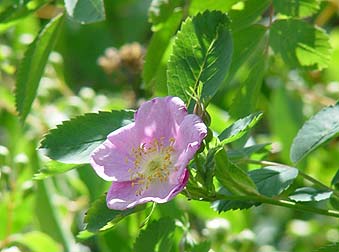
In the event of a severe infection, the leaves may turn yellow and drop off, which will negatively impact the plant’s growth and flowering. White powder will accumulate on the surface of the leaf and immature pods of an infected plant. A fungus called powdery mildew typically appears in the spring and summer, when the air is quite dry. Seasons that are warm and muggy, like spring and summer, are more likely to experience numerous diseases and pests. Plants can avoid superfluous nutrient intake and create stronger with concentrated nutrition by pruning in good time after blossoming and before winter. It is advised to use medications that can be taken beforehand to keep the plant from becoming ill. Pollinators prefer native rose cultivars with open-faced flowers over non-native hybrids with double blossoms.
#Nootka rose rosa nutkana full
Super fragrant, 2-3 inch single pink flowers appear in summer followed by showy red hips.Favors moist sites in full sun to light. Forms prickly thickets to 6 feet tall with light green foliage. Nootka Rose does not generate much nectar, hence bees collecting pollen are the main insect feeders of roses. Named for the Nootka Sound in Alaska where it was originally described,California is the southern end of this shrubs range.

Rose hips can be eaten, and lots of birds like them. They resemble little crabapples and are ornamental. The rose bush, however, should still have these little, berry-sized, scarlet seed balls on the ends of the stalks if the wasted flowers are left on it over the winter. Due to our propensity to cut the faded rose flowers down to the subsequent stem node to promote additional flowers, we frequently miss them.

Rose blossoms fade, yet the shrub still produces rose hips.


 0 kommentar(er)
0 kommentar(er)
